Do you experience recurring violin pain from over-playing, tension, or misalignment in your posture?
After a busy month of performances and rehearsals on top of my regular teaching schedule, the old pain in my left shoulder flared up again.
I’ve done a lot of research on violin pain and the various ways to prevent it, including proper posture and neck alignment, ergonomic shoulder rest and chin rest set-ups, yoga stretches and other care for maintenance and pain prevention.
However, even with all this knowledge of posture and preventative care, the lopsided nature of holding the violin and the many hours of playing each day took a toll on my body this month.
Sometimes, even when I think I’ve got it figured out, my body will tell me that I’ve reached my limit for how much I can play the violin.
And, because I’m human, I may have forgotten to stay mindful and relaxed in my body while preparing for a big concert and thinking about a million other things!
So, when the pain returns, there’s nothing to do except to take a little break from the violin. Here are the steps I’m taking this week to let my shoulder recovery.
Mental practice ONLY during violin pain flare-ups
While I let my shoulder recover from violin-related pain, I still need to learn new music and make progress towards my next performance. Instead of practicing with the violin and further exacerbating the soreness, I am taking the opportunity to practice mentally instead.
For example, I’m working on memorizing a piece of music for an audition. So, I sit in front of the score and hear the music in my head. I hum the music, one measure at a time, first while looking at the score, and then with my eyes closed. Then, I imagine the movement of my fingers and the direction changes of each bow stroke. I make decisions about articulation, dynamics, and phrasing. Additionally, I listen to recordings of the music and think about how the performers made certain stylistic and technical choices. All this type of practicing can be done without touching the violin at all.
Three Exercises that feel AMAZING for violin pain
While you’re taking a break from playing the violin, you can practice these exercises to release tension.
Shoulder flossing
Hold a strap wide between your hands in front of you. Pull the strap tight. Lift the strap over head and then bring it behind your back. If you feel one shoulder popping up over the other, slow down the movement so that your shoulders move at the same time. If you want more sensation, narrow the distance between your hands on the strap.
This exercise helps me to open up my chest and even out the movement in my shoulders and upper back.
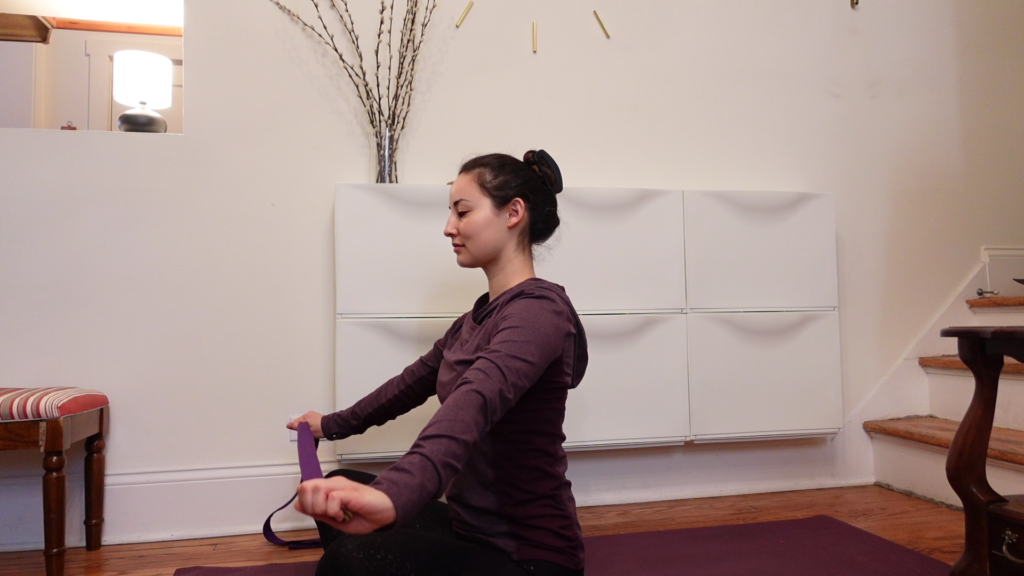
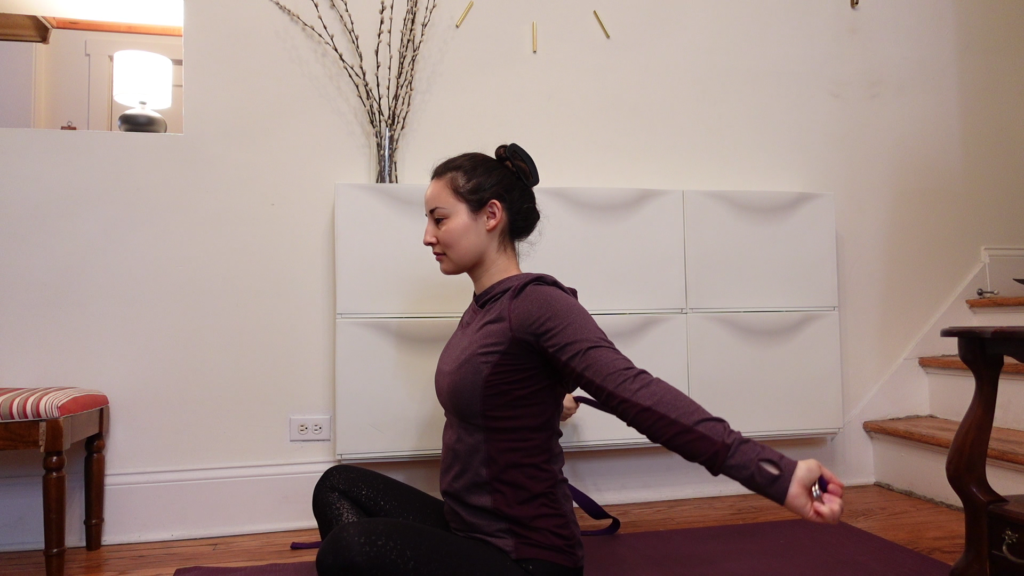
Neck stretch with arm circles
Sit comfortably. Reach your left arm to the left. Drop your right ear towards your right shoulder. You should already feel a stretch along the left side of your neck. Move your left arm in tiny circles, five times in one direction, and then five times in the other direction. Do the same exercise on the other side of your body.
I definitely feel this stretch more on the left side of my neck when I’m experiencing violin-related pain.
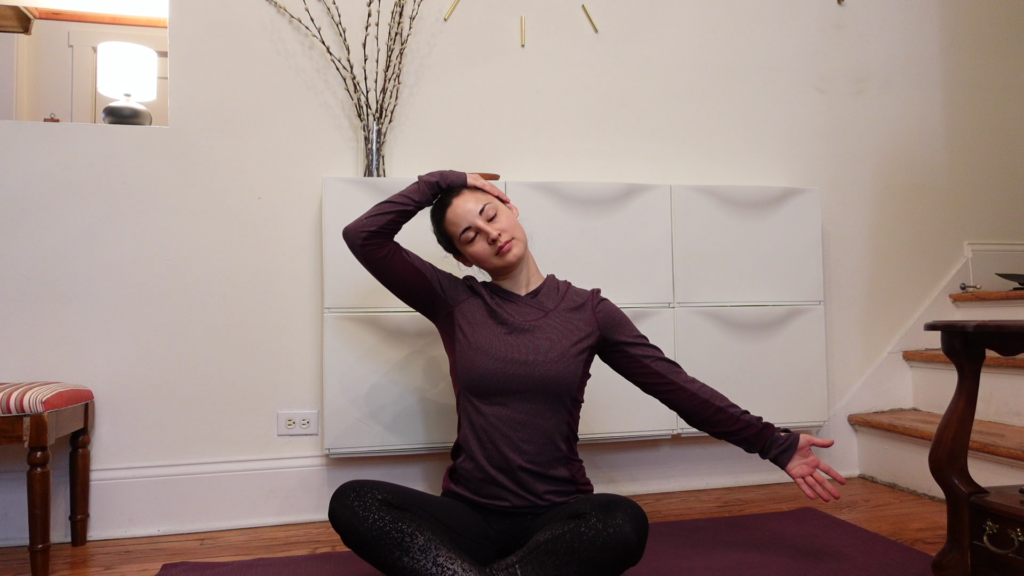
Gorilla pose (Padahastasana)
Stand with your feet about hips’ width apart. Bend at your waist and let your head and arms hang heavy. Bend your knees slightly. Lift your toes and slide your hands, palms facing up, underneath your feet. If you’re feeling flexible, you might be able to slide your hands all the way under your feet so that your wrists connect to your toes. Start to straighten your legs any amount. You should feel a stretching sensation in your upper back, shoulders, and hamstrings.
This pose engages your entire body, but most importantly, it will help open up the back line of your body, including your shoulders and upper back. It’s also great for evening out the sides of the body when you feel lopsided due to violin playing.
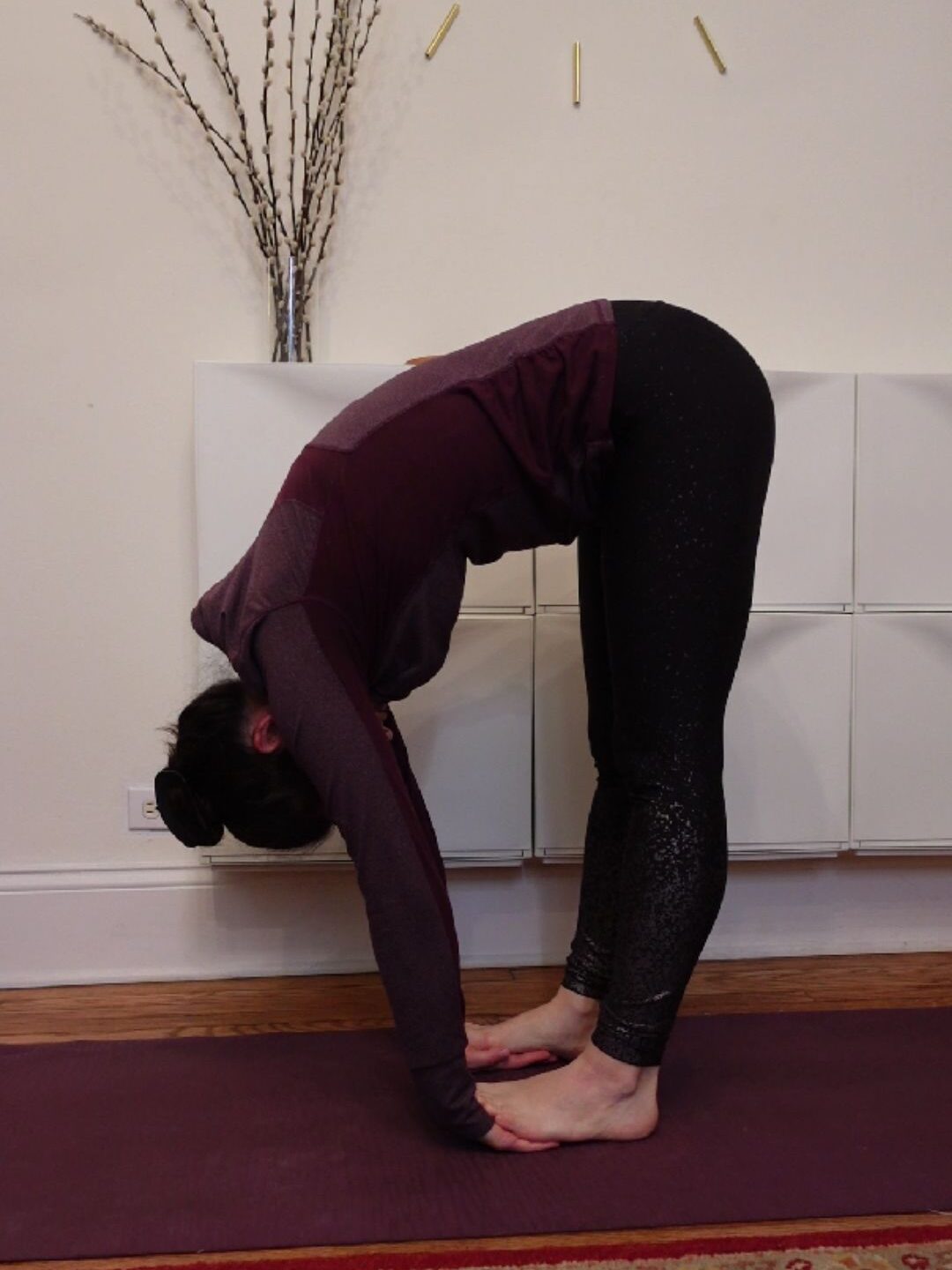
For more exercises and stretches, you can read my previous posts on Shoulder Pain and Neck Pain.
Massage with rubber ball and ice
When I get muscle knots in my upper back and shoulder, it helps to massage the muscle with the pinky ball, either bracing myself against a wall or lying on the floor. Doing this for a few minutes per day offers some relief from tension and muscle cramps. It’s also helpful to ice your shoulder and any areas of tension right after you play.
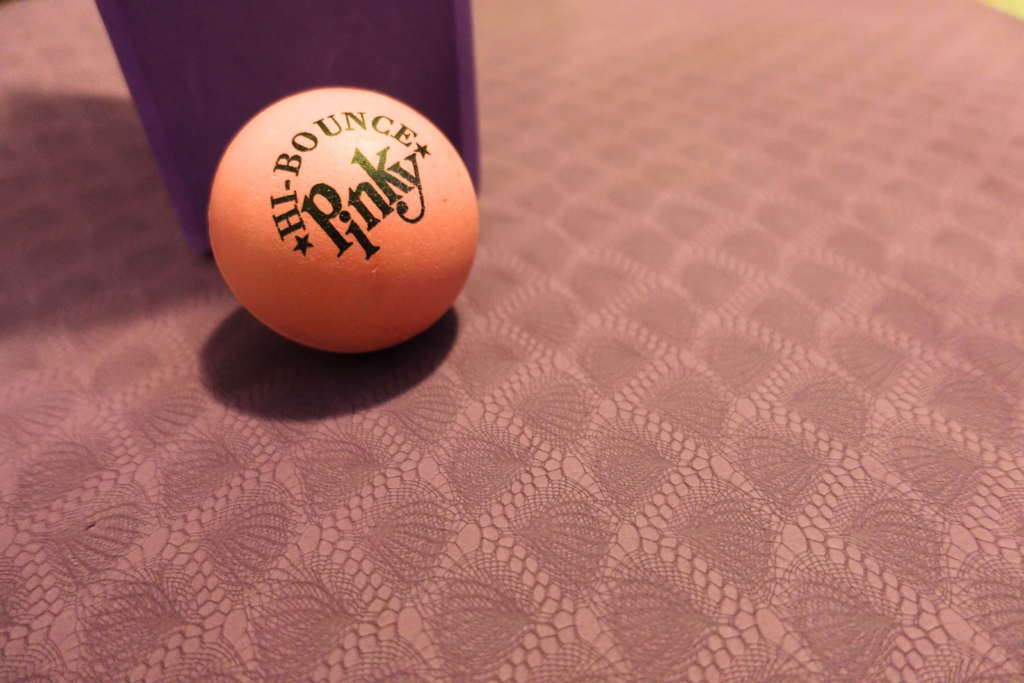
See a specialist for violin pain treatment
If home treatments are not providing relief, seek treatment from a specialist. Talk to a doctor or care provider about how you hold the violin and where you are feeling the pain. They may be able to make suggestions for aligning your posture in a more comfortable way and help you loosen up the affected muscles through different treatments.
Gradually return to playing when ready
After about a week of rest, I slowly reintroduce practicing into my days again, with more mindfulness about eliminating tension and keeping my shoulder relaxed while I play. I’ll start with just 10 minutes of practicing with the violin and increase the amount of time each day as I’m able. I also continue my mental practice with the score, listening to recordings, and other ways of “practicing” without actually holding the violin.
Consider the root cause of your violin pain
Once you return to playing violin, evaluate if your pain was simply caused by over-playing, or if you have bigger issues in your posture or set-up that need to change. It’s difficult to change habits, but this is a good time to consider your body’s alignment and if you carry unnecessary tension while holding the violin. You can read more about neck alignment for violinists here.
Having violin pain is not a moral issue
Sometimes when violinists experience pain from playing, they get into a shame mindset where they beat themselves up for not having the perfect posture or being mindful of their body 100% of the time. Truthfully, as a professional musician who has done lots of research and writing about violin pain, I still experience pain occasionally. I still sometimes forget to be mindful of my body while practicing and rehearsing. I still go through periods of time when I push my body too far by over-playing and over-practicing. It’s okay. Shaming myself for having pain would only create resistance to healing and finding solutions. I simply take time off to recover and gently return to playing when it feels right.
How have you dealt with recurring violin pain?
I always appreciate hearing from readers. Have you found successful ways to heal or prevent violin pain? You’re welcome to send me a message and share your experience. I also offer online violin lessons where we can work on reducing violin-related pain through adjusting posture, technique, and shoulder-rest and chin-rest set up.
Lessons for reducing violin-related pain
If you’d like to work with me on violin posture, tension, or finding a better shoulder-rest set-up, book a consultation at the link below:
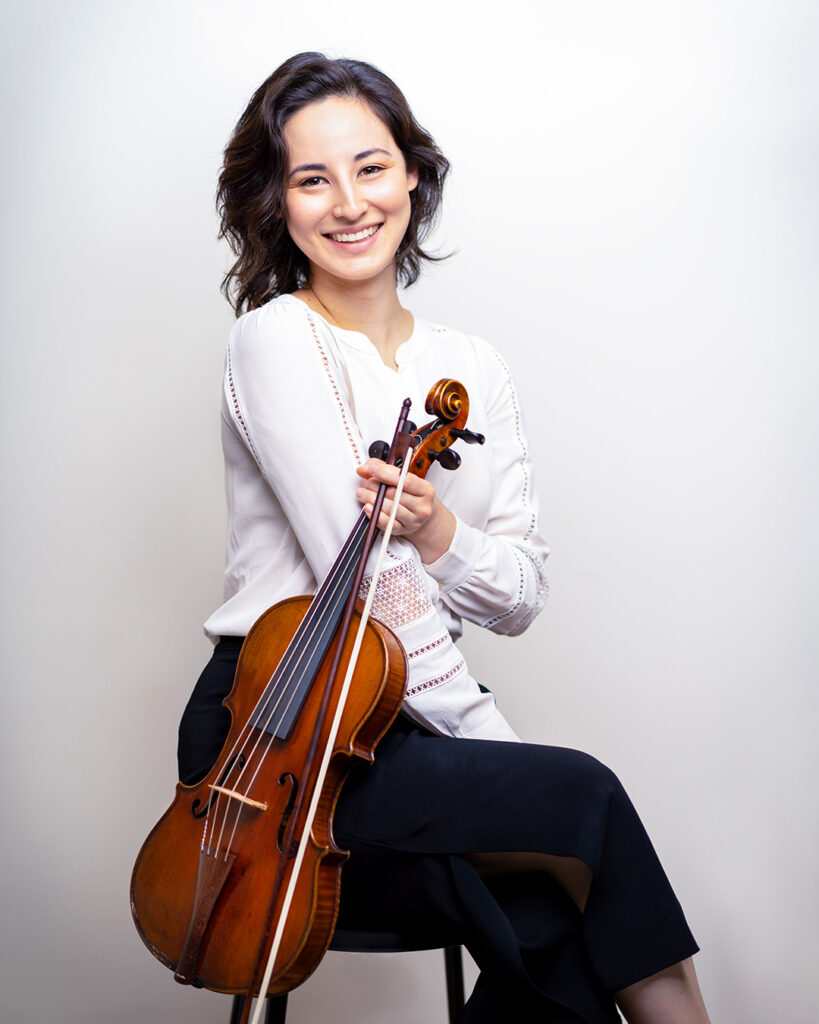
Kiyoe Matsuura is a violinist and violist based in the Chicago area. In addition to an active performing career on historical instruments, she teaches a large studio of violin and viola students ranging in age from 4 to 70. She has completed teacher training in Suzuki Violin Books 1-5 and shares her pedagogical knowledge freely online through videos and blog posts. Kiyoe received her yoga teaching certification in 2017 and uses her knowledge of anatomy and movement to help violinists who suffer with playing-related pain.
Latest Posts From the Blog
How To Do a 180° Career Change As A Classical Musician
As a musician, I’ve had moments of wondering what life would be like to go through a career change. …
What It’s Like To Fulfill Your Parents’ Musical Dreams
With discipline, talent, and passion for orchestral music, 32-year-old cellist Sonia Mantell has alr…
How To Treat Violin-Related Pain and Injuries With Sotai
For violinists who have struggled with playing-related pain despite trying countless remedies, a Jap…
How To Build A Nationally-Recognized Non-Profit Music Ensemble
Starting a non-profit music ensemble is a dream shared by many musicians, but turning that dream int…
How Friendships and Passion Shape A Meaningful Life In Music
Have you ever reflected on the values that guide your career as a musician? Pianist, harpsichordist,…
How To Overcome Left-hand Pain While Playing Violin
Left-hand and arm pain while playing violin is a common challenge for students. As a violin teacher,…





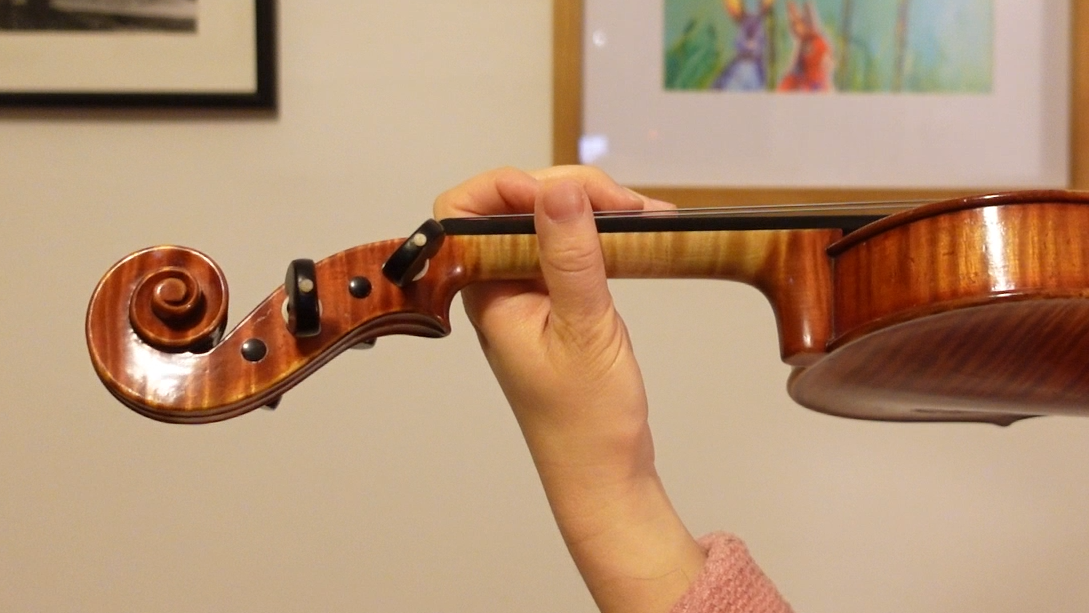
Pingback: How To Overcome Left-hand Pain While Playing Violin - Kiyoe Matsuura Violin
I found this post incredibly useful. The tips and insights you’ve shared are going to be very helpful for my work.
Pingback: How To Treat Violin-Related Pain and Injuries With Sotai - Kiyoe Matsuura Violin